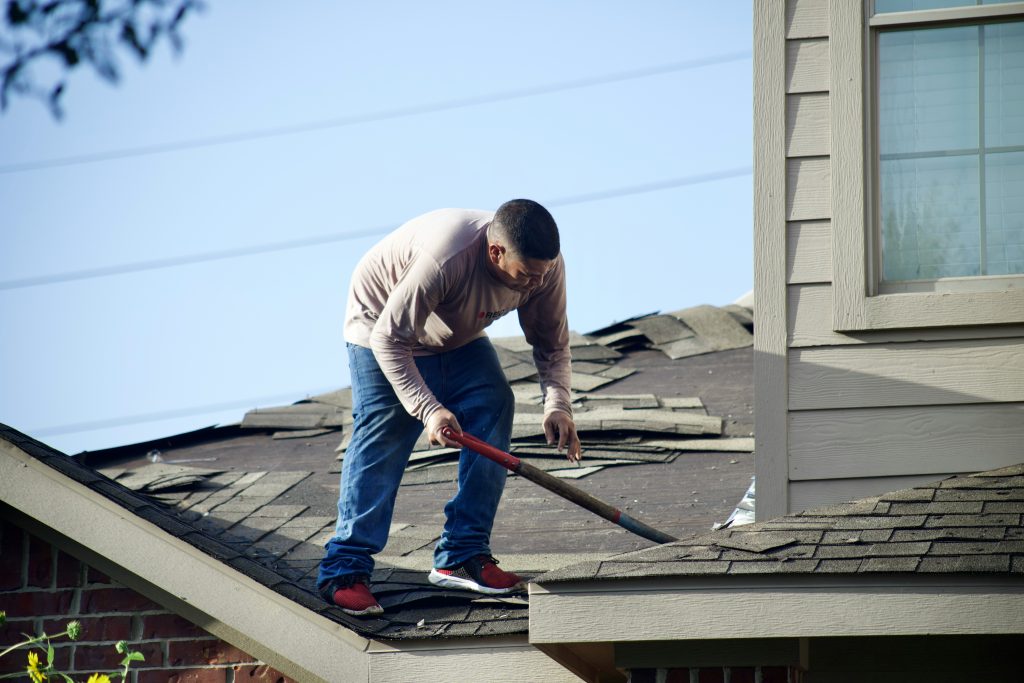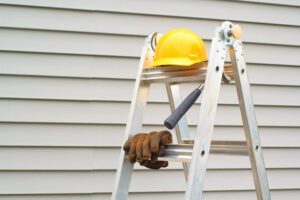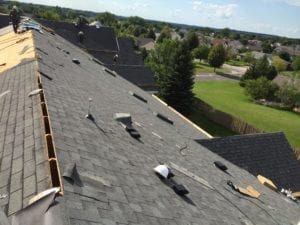When you’re considering replacing your roof, you’re likely wondering how long it’ll take before everything’s back to normal. The duration can vary widely, primarily influenced by the size and complexity of your roof, the materials chosen, and external factors like weather. For instance, a standard asphalt shingle roof on a single-family home might take a few days under best conditions, but if you’re looking at high-end materials or complex structures, your timeline could extend. Each choice you make impacts the timeline, from selecting the contractor to the final inspection. What other factors should you consider to make sure your project stays on track?
Factors Influencing the Timing of Replacements
When you’re planning to replace your roof, several factors can affect how long the process will take. Considerations include the weather conditions, the size and complexity of your roof, the type of materials being used, and how easily workers can access your roof.
Each of these elements plays an important role in determining the overall timeframe for your roofing project.
Weather Conditions
Weather greatly impacts your decision on when to replace your roof, as certain conditions can delay the start or progress of roofing projects. Best conditions are typically dry and mild. Rain, snow, or even excessive wind can halt work, posing safety risks and complicating the installation of materials.
Summer’s extreme heat isn’t ideal either, as it can soften asphalt shingles, making them less durable during installation.
You’ll need to monitor the forecast closely and possibly schedule your roofing during seasons known for stable weather. Unexpected weather shifts can still throw a wrench in the works, so it’s wise to factor in some buffer days. This flexibility can help make sure that the job isn’t rushed, which is essential for long-term quality.
Roof Size and Structure
How does the size and complexity of your roof affect the timing of its replacement?
Larger roofs naturally take more time to replace than smaller ones, as there’s simply more area to cover. If your roof is sprawling, expect the project to last longer due to the sheer volume of materials and labor involved.
Complexity also plays a key role. Features like multiple levels, steep slopes, skylights, or chimneys can complicate the replacement process. Each of these elements requires careful navigation and additional time to make sure everything is installed properly.
The more intricate your roof design, the more time you’ll need to allot for a thorough, safe replacement. It’s not just about size, but the details that define it.
Roofing Material
The type of roofing material you choose greatly impacts the duration of your roof replacement project. Lightweight materials like asphalt shingles can be installed relatively quickly, often within a few days. In contrast, heavier materials such as slate or clay tiles not only require more careful handling but also more time for installation due to their weight and the need for precise placement.
Metal roofing falls somewhere in the middle; although it’s durable and has a longer lifespan, it demands specialized skills for proper installation, which can extend the timeline. Each material’s characteristics influence not just the installation process but also the preparatory work needed, such as the construction of additional support structures, which can further affect the overall timeline.
Accessibility of Your Roof
While evaluating the type of roofing material, it’s also important to assess how easily workers can access your roof. This will greatly impact the project’s duration. If your home is surrounded by large trees, fences, or other structures that limit access, it can add significant time to the job.
Steep roofs or those with multiple levels also pose challenges. They require more safety equipment and precautions, which can slow down the process. You’ll need to think about whether the roofing crew can easily get their equipment and materials up to the roof.
Limited access might also mean that debris removal takes longer, further extending the timeline. Planning for these factors in advance can help streamline the replacement process.
The Phases of Roof Replacement
Understanding the stages involved in replacing a roof helps you plan effectively. The process starts with a thorough inspection to identify any underlying issues and determine the scope of the work. This step guarantees that you’re aware of any necessary repairs before the new roof goes on.
Next, you’ll see the removal of your old roof. This involves stripping off all existing shingles, tiles, or other materials. It’s a labor-intensive phase where the old materials are carefully removed and disposed of, leaving the roof deck exposed.
After clearing the old roof, repairs are made to the underlying structure. This could include replacing rotted wood or reinforcing areas to establish a stable base for your new roof.
The installation of the new roofing material follows. Whether you’ve chosen shingles, tiles, or another type, this is where you’ll see your roof start to come together. Each material requires a different technique, so the duration of this stage can vary.
Wrapping up, the final touches are added, such as installing ridge caps and sealing any exposed nails. It’s vital that this is done meticulously to prevent leaks.
Each of these stages is critical, as skipping one can impact the quality and longevity of your new roof.
The Crucial Role of Roof Replacement
Replacing your roof isn’t just about updating its look; it’s essential for preventing damage to your home.
By investing in timely roof replacement, you can save significant costs on repairs in the long run.
Most importantly, a sturdy roof enhances your family’s safety by providing reliable protection from the elements.
Preventing Damage
Proactively replacing your roof can greatly reduce the risk of costly water damage and structural issues. Over time, your roof faces relentless exposure to the elements, leading to wear and tear that isn’t always visible from the ground.
By the time you notice a leak, there may already be significant damage. Regular inspections and timely replacement prevent these hidden problems from escalating. Don’t wait for clear signs of failure. Small issues like cracked shingles or a slight sag can quickly evolve into major concerns.
Addressing them early keeps your home safe and maintains its structural integrity. You’re not just preserving your property; you’re investing in peace of mind, knowing your home stands secure against nature’s challenges.
Cost Savings
Regularly replacing your roof not only enhances its longevity but also greatly reduces potential repair costs. Over time, minor issues like leaks or loose shingles can evolve into major problems, leading to expensive emergency fixes. By proactively managing your roof’s condition, you’re dodging the bullet of high-cost repairs stemming from neglect.
You’ll also benefit from the latest roofing materials that are more efficient and longer-lasting than older versions. These advancements can improve your home’s insulation, reducing your heating and cooling bills to a large extent. In addition, a new roof boosts your property’s market value. Should you decide to sell, you’ll likely recoup a significant portion of the installation cost through the increased property value.
Family Safety
Ensuring the integrity of your roof plays a vital role in protecting your family from environmental hazards and security risks. A compromised roof can expose your home to severe weather, leading to water damage, mold, or structural issues that threaten your family’s safety and health.
By replacing your roof in a timely manner, you’re not just preserving the structure of your home but ensuring a safe environment where your loved ones can live worry-free. Consider the peace of mind that comes with knowing you’re shielded from the elements by a strong, reliable roof.
It’s not just about avoiding discomfort; it’s about securing a sanctuary against potential dangers that lurk outside. Don’t underestimate the importance of a robust roofing system.
Conclusion
You’ve seen that replacing a roof isn’t just about slapping on some shingles. It’s a complex process influenced by several factors like roof size, material, and weather.
Depending on these, your project could take anywhere from a few days to several weeks. Remember, each stage from inspection to the final touches plays a significant role in ensuring your new roof is high-quality.
Plan wisely and keep these factors in mind to guarantee a smooth and efficient roof replacement.







